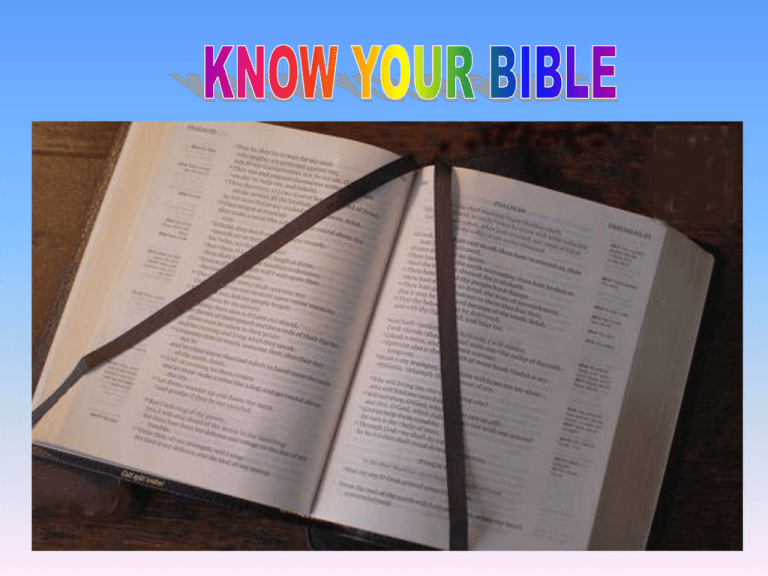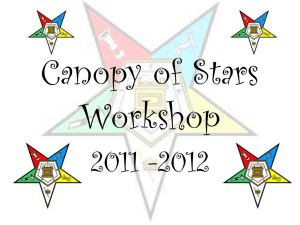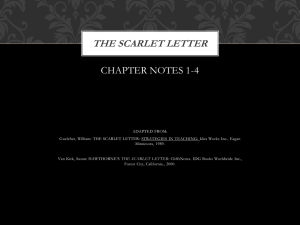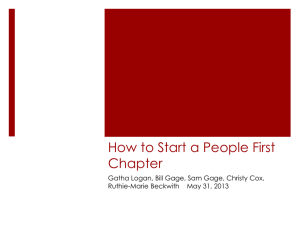Know Your Bible - Know Lord Jesus
advertisement

What is the Bible? The word “BIBLE” comes from the Greek “BIBLIA” meaning The Books. It is a collection of ancient writings about God (Yahweh) The Protestant Bible includes 66 writings of the Palestinian Canon. The Catholic Bible includes 76 books of the Alexandrian Canon. BIBLE : - Ist Part : OLD TESTAMENT and IInd Part : NEW TESTAMENT “TESTAMENT” means “AGREEMENT” “SCRIPTURE” means “SACRED WRITINGS” THE OLD TESTAMENT: tells the history of God’s interventions in the lives of the Jews— “THE CHOSEN PEOPLE”. THE NEW TESTAMENT: is about the birth, life, teaching, death and resurrection of Jesus Christ, the Son of God, as well as the life and growth of the early church He founded. 39 Old Testament Books were written in HEBREW. 27 New Testament Books were written in Greek. 7 Old Testament Books were written in GREEK AND ARAMAIC. WHO WROTE THE BIBLE? It was written by many different authors, mostly HEBREWS, some unknown. WHEN WAS THE BIBLE WRITTEN? · At Different Times: Over about 1000 years – from about 900 B.C. to 150 A.D. · At Different Places: Palestine, Babylon, Egypt, Rome and Corinth. · For Different Purposes: to teach religion and patriotism, to describe the Messiah. WHO CHOSE THESE WRITINGS? · The writings were not chosen but acknowledged to be inspired. The council of Hippo (293 A.D.) and subsequent councils drew up a list or canon of inspired books. IN WHAT LANGUAGE WAS THE BIBLE WRITTEN? · IN HEBREW, ARAMAIC AND GREEK. HEBREW – is a Semitic language like Arabic and is written from right to left. It was the language of Jews after their return from exile at the end of the 6th Century B.C. ARAMAIC – was a Semitic language of Armenia and Persia used by the Jews after their return from exile. It is the language that Jesus spoke. GREEK – is an Aryan or Indo-European language like Sanskrit and Latin. It became the international language of Western Asia after Alexander’s conquest. WHO ARE? (a) THE JEWS? JEWS – originally meant ‘man or men of Judah’ (the 4th son of Jacob), a name applied to the Hebrews particularly after the return from Babylon. It was commonly used in the Old Testament by the Non-Jews to refer to the Hebrew descendents of Abraham in general. In the New Testament the plural ‘Jews’ had become a familiar term for all the Israelites. b) THE PHARISEES? PHARISEES – are a group of Jews (of Palestine) who separated themselves from the ordinary Jews in order to excel others in the observances of religion, especially in the exact observances of the Laws. Pharisee means “the separated ones” – separated from the rest of the Jews because they allowed themselves to be influenced by Hellenism (Greco-Roman Culture). (c) THE SADUCEES? SADUCEES – are a group of upper class, rich and noble Jews who tried to be modern and up-todate by encouraging the customs of the Greeks. They claim to be descended from the priestly family of Zadok. (d) THE SCRIBES? SCRIBES – are the scholars and intellectual men of Judaism who are experts in the Law (the Torah). (e) THE SAMARITANS? SAMARITANS – are the inhabitants of the district of Samaria. They were considered lower than the pagans. OLD TESTAMENT (46 BOOKS IN CATHOLIC BIBLE, 39 BOOKS IN PROTESTANT BIBLE). GROUP – A The first 5 cover “TORAH” “THE LAW” : These are sometimes called the “PENTATEUCH” or “THE 5 BOOKS OF MOSES”. GENESES: how the world began beliefs about origins of the human race origin of Hebrews and their place as the “Chosen People” 50 CHAPTERS: 1-11: Story of the origins of humankind 12-50: Story of Patriarchs, the fathers of Jewish race: ABRAHAM, ISSAC, JACOB, JOSEPH. EXODUS: how Israelites fled from Egypt the Laws they swore to observe when they made their covenant with Yahweh at Mount Sinai. 40 CHAPTERS: 1-18: Historical 19-22: LAWS, including the 10 COMMANDMENTS. LEVITICUS: more laws regulations for sacrifices how to observe HOLY Days 27 CHAPTERS: 1-7: Law of Sacrifice 8-10: Consecration of the Priesthood 11-17: Law of “Clean” and “Unclean” 18-27: The Holiness Code NUMBERS: census of people story of Israelites wandering in the wilderness. 36 CHAPTERS: 1-4 and 26: Census other chapters – Historical DEUTERONOMY: story of Moses’ last discourses repeats laws 34 CHAPTERS: 1-11: Moses’ address 12-26 and 29: Revised Laws Deuteronomy: Greek for “Second Law”. GROUP – B 21 BOOKS OF THE PROPHETS—6 “FORMER PROPHETS” JOSHUA – story of Joshua, Successor of Moses as leader of Israelites. Conquest of Canaan 24 CHAPTERS: 1-12: Conquest of Canaan —about 12th-7th Cent. B.C. JUDGES: troubles in promised land fortunes of Israel depended on obedience of God’s Law 21 CHAPTERS: 3-16: the 12 Judges —about 12th-7th Cent. B.C. 1 SAMUEL: continues story to death of Saul, Israel’s first king. 31 CHAPTERS: 1-7: Samuel as judge of Israel 8-15: Samuel and Saul 31: Death of Saul about 11th Cent. B.C. 2 SAMUEL: continues story to last year of king David. 24 CHAPTERS: 1-5: David’s rise to power 6-7: Transfer of ark about 10th Cent. B.C. 1 KINGS: death of David reign of his son-Solomon history up to Ahaziah, son of Ahab 22 CHAPTERS: 1-11: History of Solomon 12-22: The divided kingdom about 9th to 6th Cent. B.C. 2 KINGS: continued story division into two kingdoms events leading to captivity of bath 25 CHAPTERS: 1-17: The divided kingdom 18-24: History of Judah 25: Fall of Jerusalem about 7th to 6th Cent. B.C. 3 “MAJOR PROPHETS” ISAIAH: - proto Isaiah (1-39) speeches of the prophet Isaiah on many subjects and occasions deutero Isaiah (40-66) promises and hope and warnings, Messianic oracles 66 CHAPTERS: about 8th Cent. B.C. JEREMIAH: prophecies to a nation in crises during 40 turbulent years oracle of the new covenant 52 CHAPTERS: 1-25: oracles against Judah 26-45: Martyrdom of Jeremiah 52: Fall of Jerusalem about 7th to 6th Cent. B.C. EZEKIEL: reproaches for Israel’s sins promise of salvation in a new covenant conditions of new covenant 48 CHAPTERS: 1-24 : oracles of doom on Jerusalem 25-48 : the book of restoration about 6th Cent. B.C. 12 “MINOR PROPHETS” HOSEA: first of 12 minor prophets preached that Yahweh was a God of love and would forgive those who repented 14 CHAPTERS: 1-3 : Hosea’s marriage 4-13 : Message against Israel 14 : Repentance and Salvation about 8th Cent. B.C. JOEL: - call to repentance through fasting and prayer promise of the outpouring of the Spirit 3 CHAPTERS: 1-2 : the plague of locusts about 5th Cent. B.C. AMOS: earliest recorded sermons of a prophet preached to the Northern Kingdom that Yahweh would destroy Israel for its sins. 9 CHAPTERS: 1-2 : judgment against the nation 3-6 : discourse 7-9 : vision about 8th Cent. B.C. OBADIAH: sermons denouncing Edom for joining Judah’s enemies. 1 CHAPTER: about 6th and 5th Cent. B.C. JONAH: a parable of mercy shows God loves all, not just Jews. 4 CHAPTERS: 1-2: Jonah’s call, disobedience and repentance 4: God’s mercy about 8th and 4th Cent. B.C. MICAH: judgement of Judah for infidelity predictions of the birth of Christ in Bethlehem 7 CHAPTERS: 1-3: judgement on Israel 4-5: Glory of new Israel 6-7: warning about 8th Cent. B.C. NAHUM: sermons against Nineveh (Assyria) soon after Nineveh had terrorized Judah, late 7th Cent. B.C. 3 CHAPTERS: 2-3: The fall of Nineveh—about 620 B.C. HABAKKUK: prophet in Judah shortly after Nahum God’s use of Babylon as a rod of chastisement for Judah. 3 CHAPTERS: 1-2: Habakkuk’s complaints and the Lord’s reply about 620 B.C. ZEPHANIAH: sermons against idolatry and foreign ways he prophesied during the reign of Josiah. 3 CHAPTERS: 3: Jerusalem’s doom and redemption—about 640 to 630 B.C. HAGGAI: preached to Jews returning to Jerusalem after exile in Babylonia message was to rebuild the temple of Yahweh in Jerusalem 2 CHAPTERS: 1: commandment to build the temple 2: message of comfort about 520 B.C. ZECHARIAH: partner of Haggai in effort to rebuild the temple the messianic vision of the prince of peace 14 CHAPTERS: 1-8: the prophetic mission 9-14: future prosperity and peace about 520-518 B.C. MALACHI: means “my messenger” preaches against abuses and indifference. 4 CHAPTERS: 1: Israel’s sins 2-4: God’s judgment and mercy about 500 and 445 B.C. GROUP – C (13 Books—The Writings) PSALMS: 150 songs of prayer and praise many are traditionally ascribed to David, but most are unknown 150 CHAPTERS: 8, 19, 29, 33 : Praise 39, 69 : Lamentations 41, 65 : Thanksgiving 2, 93, 72 : Royal Psalms about 9th to 4th Cent. B.C. PROVERBS: a collection of maxims and sayings religious and worldly by Solomon and others 31CHAPTERS: 10-29: proverbs of Solomon 31 : Semuel’s sayings about 5th Cent. B.C. JOB: - narrative drama story of troubles that afflict a good man why evil should happen to the righteous 42 CHAPTERS: 3-31: Job and his friends 38-42: The Lord answers Job about 5th Cent. B.C. DANIEL: story of a young Jew, taken captive to Babylon, who rose to become Governor. gives an interpretation of history and hope for a ‘new order’ on earth. 14 CHAPTERS: 7-11: Daniel visions about 6th to 2nd Cent. B.C. EZRA: story of the return of exile from Babylon to Judea in 536 B.C. starts with the proclamation of Cyrus, King of Persia. 10 CHAPTERS: 3-6 : The temple is rebuilt and dedicated about 5th and 4th Cent. B.C. NEHEMIAH: story of how a great leader left Persian court to help returned exiles to rebuild Jerusalem and their lives. 13 CHAPTERS: 8-10: Promulgation of Ezra’s Torah about 5th and 4th Cent. B.C. 1 CHRONICLES: history from Adam to David 29 CHAPTERS: 10: The death of Saul 11-29: Reign of David about 4th Cent. B.C. 2 CHRONICLES: history of Israelites from Solomon through the Babylonian exile 36 CHAPTERS: 1-9: The reign of Solomon 10: Revolt 36: The fall of Jerusalem about 4th Cent. B.C. SONG OF SONGS: a love lyric which many feel is a parable showing God’s love for Israel and Christ’s love for the Church. 8 CHAPTERS: about 4th Cent. B.C. RUTH: - a pastoral story - how a Moabite becomes a daughter of Israel and the ancestress of King David and of Jesus Christ. 4 CHAPTERS: 2-3: Ruth meets Boaz 4: Boaz marries Ruth about 7th or 6th Cent. B.C. LEMENTATIONS: a book of dirges on the fall of Jerusalem with its consequent chaos and oppression. it reflects the spirit and style of Jeremiah 5 CHAPTERS: 1: The sorrow of Jerusalem 3: Punishment on ruins about 586 B.C. ECCLESIATES: an account of the divine wisdom reflected in nature, sovereign and independent of man 12 CHAPTERS: about 3rd Cent. B.C. ESTHER: story of a Jewish girl who became queen of Persia and saved her people from destruction No mention of God in the Hebrew text of the entire work 16 CHAPTERS: 1: Esther becomes Queen 3-5: Hamn’s plots 9-10: feast of Purim GROUP – D (7 Books—The DEUTEROCANONICAL) The following are included in Catholic and Orthodox Bibles and they call them DEUTEROCANONICAL BOOKS. The Protestants omit this section and call it the “APOCRYPHA”. TOBIT: - a religious story emphasizing the validity of faith in times of apparent abandonment by God. - Israel’s role of Salvation 14 CHAPTERS: 1-3: Tobit’s virtues and trials. 7-10: Marriage of Tobias and Sarah about 3rd Cent. B.C. JUDITH: - Story which teaches Israel’s role of salvation and destiny in human history. 16 CHAPTERS: 1-7: Peril of the Jews 8-15: Deliverance 16: Victory about 2nd Cent. B.C. WISDOM OF SOLOMON: praise of divine wisdom personifies wisdom a defender of righteous condemnation of idolatry 19 CHAPTERS: 1-5: Wisdom and human destiny 10-19: Wisdom of God in the history of Israel about 100 B.C. SIRACH: also called Wisdom of Jesus Son of Sirach asserts principles of divine moral law, moral responsibility for sin, divine retribution 51 CHAPTERS: about 190 B.C. BARUCH: a re-telling of the history of the exile to give the Jews, the reason for their distress and the assurance of restoration. 6 CHAPTERS: 2-3: Prayer of Baruch 4-5: Discourse about 6th Cent. B.C. 1MACCABEES: historical account 175-134 B.C. of Jews’ struggle to defend worship of Israel and fidelity to the Law. God is at work in History 16 CHAPTERS: 3-9: The campaigns of Judas Maccabaeus about 174 B.C. 2 MACCABEES: account of (years 180-161 B.C.) the same revolt, through Jewish victory and subsequent independence. Purpose is instruction and edification. 15 CHAPTERS: 8-13: Success of Judas Maccabaeus about 110 B.C. NEW TESTAMENT (27 BOOKS IN BOTH CATHOLIC AND PROTESTANT BIBLES) GROUP – A THE 4 GOSPLES: “Gospel” means “Good News” – (The first 3 are called “SYNOPTICS” meaning ‘seen with the same eye.’ They cover the same events) MATHEW: includes most of Mark (about half) written about 85 A.D. after the fall of Jerusalem in 70 A.D. seems WRITTEN FOR JEWS to prove Jesus fulfilled prophecies of coming of the Messiah. 28 CHAPTERS: 4-13: Galilean Ministry 14-20: Journeys of Jesus 21-27: Passion narrative 28: Resurrection MARK: earliest and shortest story of Jesus life. written about 70 A.D. and published after the fall of Jerusalem seems to have WRITTEN FOR GENTILES to present Jesus as Messiah and Son of God. 16 CHAPTERS: 1-8: Public Ministry in Galilee 8: Peter’s confession 16:Appearances and Ascension of the risen Lord. LUKE: - written about 75 A.D. - about one third based on Mark - provides a chronological sequence - seems WRITTEN FOR GREEKS to show Jesus as a Universal Saviour CHAPTERS: 1-2: infancy narratives 3-4: Baptism and temptation of Jesus 9-19: Journey narrative JOHN: - written between 90 and 100 A.D. - written for INSTRUCTION of early Christian Church - presents Jesus as the eternal Word of God who descended from heaven and became man. 21 CHAPTERS: 2-11: Ministry of Jesus 12-21: Passion and resurrection GROUP – B THE ACTS: The Acts of the Apostles. The only early account of the Christian community. how it spread from Palestine to Rome, the capital of the world. a sequel to Luke, the 3rd Gospel, and by the same author. covers first 30 years after Jesus’ death written about 75 A.D. 28 CHAPTERS: First 12 – Events in Palestine and Asia Minor Next 16 – Paul’s missionary tours to Judea, and throughout the Roman World up to his imprisonment in Rome. GROUP –C (13 LETTERS OF PAUL WRITTEN BEFORE THE GOSPELS 20 TO 30 YEARS AFTER JESUS’ DEATH. SO THEY ARE THE EARLIEST CHRISTIAN WRITINGS.) ROMANS: from Corinth to the Roman Church to prepare Church for his visit just before final visit to Jerusalem principal theme: Relationship between Judaism and Christianity. 16 CHAPTERS: 1-11: Doctrinal section 12-15: The demands of the new life. about 57-58 A.D. 1 CORINTHIANS: advice to the Corinthian Church on insubordination, chastity and marriage etc. the resurrection 16 CHAPTERS: 1-6: condemnation of disorders in the Corinthian Church 7-15: answers to the questions in the community about 57 A.D. 2 CORINTHIANS: Paul’s suffering and consolation warns he will get after evildoers on his next visit collection for poor in Jerusalem 13 CHAPTERS: 1-7: Paul’s defense 8-9: collection for the Church in Jerusalem GALATIANS: concerns Galatians converts to Christianity who were backsliding to strict Jewish laws true nature of justification by faith 6 CHAPTERS: 3-4: Faith, not the law 5-6: Christian freedom about 54-55 A.D. CAPTIVITY LETTERS EPHESIANS: a letter to a city in Asia Minor discusses mystery of salvation and the mystery of the Church 6 CHAPTERS: 1-3: Christ and the Church 4-6: The Christian life about 62 A.D. PHILIPPIANS: written when Paul was a prisoner in Rome warns against false teachings a plea for unity 4 CHAPTERS: 1-2: instructions 2:6-11: Christ’s humility about 62 A.D. COLOSSIANS: written to the Church at Collossae in highly developed Christology 4 CHAPTERS: 1-2: nature and work of Christ 2-4: the New Life in Christ about 62 A.D. PHILEMON: to a Christian, whose slave Onesimus had run away, been converted and w ready to return. asks Philemon to be merciful and express Christian brotherhood 1 CHAPTER: about 62 A.D. 1 THESSALONIANS: written from Corinth on Paul’s first visit. praises the people tells of Christ’s second coming 5 CHAPTERS: 4-5: instructions and exhortations about 51 A.D. 2 THESSALONIANS: a follow up to his first letter Paul is concerned about their attitude expecting a second coming of Christ too soon. 3 CHAPTERS: 2-3: the coming of the Lord 3: exhortation on Christian conduct about 52 A.D. PASTORAL LETTERS 1 TIMOTHY: after Paul’s release from his first imprisonment in Rome advice to Timothy about handling wrong ideas of some Ephesians 6 CHAPTERS: 2-3: directions of the community about 63 A.D. 2 TIMOTHY: from Rome at the time of Paul’s Second imprisonment asks Timothy to protect the Community against false teachings expresses great love for Timothy 4 CHAPTERS: 1-2: Exhortations 2-4: Curse and Warnings about 63 A.D. TITUS: written before Timothy letters advice to young co-workers to help them in Christianizing the social world 3 CHAPTERS: 1: Church office 2: duties of various groups in the Church about 62 A.D. GROUP – D (8 Catholic Letters) HEBREWS: Author unknown Treats the dignity of the person of Christ God’s ultimate word of salvation 13 CHAPTERS: 1-10: The superiority of Christ’s covenant 10-13: Fidelity to the new covenant about 66 A.D. JAMES: Probably by a relative of Jesus who became the head of the Church at Jerusalem Teaches necessity of good works to accompany faith 5 CHAPTERS: 2:14-16 Faith and works 3: Control of tongue 5: Instructions about 62 A.D. 1 PETER: from Rome to Christian Churches in ASIA MINOR teaches the value of Christ’s death and resurrection 5 CHAPTERS: 1-4: Baptismal exhortation 5: Advice for the persecuted about 64-67 A.D. 2 PETER: exhorts readers to be faithful and blameless helps build hope for a second coming warns against false teachers 3 CHAPTERS: 1: Christian calling, false teachers about 100 A.D. I, II, III JOHN: all concern various theological matters 5+1+1 CHAPTERS: 1:1-2 Walking in the light 4-5: Love and Faith II 1:4-6 Primacy of Love About 100 A.D. JUDE: possibly by the brother of James to Christians who had back-tracked to pagan immoralities 1 CHAPTER: 1:5-6 Wicked intruders 1:17-23 Exhortations about 90 A.D. GROUP – E The Revelation: “The Revelation of John”: Struggle of Christ and his followers against Satan and his cohorts. Defeat of Satan and ultimate triumph of the Kingdom of God. 22 CHAPTERS: Revelation was composed about the year 95 A.D. during the reign of the emperor Domitian. This was the time of severe persecution of the Church throughout the empire. Those who resisted were murdered. The author, whose name is John, probably held a high position of leadership and was regarded highly by many Christian communities. He had endured much but had clung to faith. The book is intended to give hope to those who are near despair. NUMBER SYMBOLISM: 3 divine Fullness 6 one less than seven, therefore, a symbol of great imperfection 7 fullness, perfection








